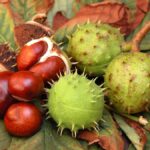There are two apricots you must simply eat out of hand: ‘Blenheim’ is a medium to large, sweet and aromatic, and very juicy apricot with a classic apricot flavor; ‘Moorpark’ is a large, sweet, aromatic, and juicy apricot with a rich plum-like taste.
Once you have enjoyed these two universally acclaimed apricots eaten out of hand, you can then take apricots to the next level: they are delicious in hot and cold desserts, cakes, pastries, fruit salads, ices, preserves, jams, and conserves.
Serving apricots
Serve apricots raw on their own or sliced and added to fruit salads and green salads. You can cook apricots in the same manner as peaches and nectarines. Apricots are interchangeable with peaches and nectarines in most recipes.
- Use apricots in cakes, pies, sorbets, ice cream, yogurt, and crêpes. Use apricots to make savory jams and chutneys. Press apricots to make juice. Poach apricots with sugar and water and purée to make a dessert sauce.
- Preserve apricots in brandy and syrup. Apricots can be macerated in alcohol, candied, canned, or dried.
- Apricot kernels can be baked or roasted similar to almonds.
Favorite apricot recipe
Apricot harvest season
The apricot, like the cherry, is among the very earliest blooming fruits each year. Apricot blossoms must survive late winter winds, rains, and frost to set fruit. That means an apricot harvest every year is no sure thing. And apricots once harvested need to be eaten or prepared in short order; their shelf life is brief.
Apricot varieties can be divided into early harvest, mid-season harvest, and late harvest. The ‘Blenheim’ is an early harvest apricot beginning in spring and the ‘Moorpark’ is a mid-season harvest fruit ready for picking in late spring and early summer. Late-harvest apricots are ready after the middle of summer.
How to choose apricots
Select apricots that are golden orange and plump, not too soft and not too hard.
Apricots that are soft and ripe will have the best flavor, but they must be used immediately.
Avoid apricots that are pale yellow or greenish-yellow, too firm, shriveled or bruised, or with whitish spots, cracks, or blemishes, although blemishes will not affect the flavor.
How to store apricots
Refrigerate ripe apricots unwashed in a paper or plastic bag for up to 2 days. If the fruit is not ripe, you can ripen it by placing it in a closed paper bag at room temperature for a few days before eating. They will be ripe when they give gentle pressure. Pack apricots lightly to avoid the spread of mold.
You can freeze apricots. First, blanch them for 30 seconds—which will make them easier to peel later—and remove the pits which can leave a bitter taste. Very ripe apricots can be frozen in stewed or puréed form.
How to prepare apricots
Wash apricots before using them. The flesh of cut apricots will darken rapidly when exposed to air. To avoid discoloration, sprinkle cut apricots with citrus juice if they are not to be eaten immediately.
Apricot flavor partners
Apricots have a flavor affinity for Bavarian cream, cardamom, lamb, orange, pork, poultry, and vanilla.
Apricot nutrition
Apricots are high in vitamin A and rich in potassium. They are a good source of vitamin C. Dried apricots are a good source of copper and magnesium.
About apricots
The word “apricot” is derived from the Latin word praecocia which means “precious.” Enjoy apricots while you can!
There are more than 40 varieties of apricots almost all of which grow in warm climates. Some apricot hybrids and interspecies hybrids such as peachcots, plumcots, and cherrycots have been adapted to cooler regions, but most apricots grow in the near Mediterranean latitudes that stretch from Italy through Turkey and Iran to the southern Himalayas to southern China, Japan, Australia, and on to California.
The apricot tree can grow to more than 30 feet (9 m) tall. Its flowers and fruit develop directly from the tree’s trunk and branches. The apricot is a stone fruit that requires a cold winter for rest and a warm summer to ripen the fruit. Most apricots have velvety pale orange skin and dry flesh. As the apricot ripens its edible downy skin becomes smooth. A ripe apricot is sweet, fragrant, and delicately flavored with very little juice.
Apricots are native to China. The Chinese cultivated apricots before 2,000 B.C. From China, apricots were carried by silk traders into ancient India and Persia and on to the region of ancient Armenia. Alexander the Great found apricots in ancient Armenia. The apricot’s botanical name armeniac—meaning from Armenia–came after Alexander introduced apricots to the Western world. The apricot reached Italy in 100 B.C.
The ancient Romans cultivated apricots but were not successful in introducing them to northern Europe. The apricot variety ‘Bredase’ may be the oldest variety in cultivation having been described by the Romans. Apricots were introduced to Britain in the thirteenth century but did not catch on until the sixteenth century. The first apricot came to the American colonies in 1720.
The botanical name of apricots is Prunus armeniaca.
Also of interest:
How to Plant, Grow, Prune, and Harvest Apricots
Related articles:
Planning the Home Fruit Garden
Garden Planning Books at Amazon:
- Vegetable Garden Almanac & Planner
- Kitchen Garden Grower’s Guide Vegetable Encyclopedia
- Vegetable Garden Grower’s Guide
- Tomato Grower’s Answer Book
More kitchen tips:
Bring your harvest to the table. Kitchen prep tips and easy recipes for the vegetables you grow. Click below for vegetable prep and recipes you can use now.
- Almonds
- Apples
- Apricot
- Aprium
- Artichoke
- Arugula
- Asparagus
- Avocado
- Bamboo Shoots
- Banana
- Basil
- Beans, Dried
- Beans. Long
- Beans, Shell
- Beans, Snap
- Beets
- Bitter Melon
- Blackberry
- Bok Choy
- Broccoli
- Broccoli Raab
- Brussels Sprouts
- Cabbage
- Cardoon
- Carrots
- Cauliflower
- Celeriac
- Celery
- Chard
- Chayote Squash
- Cherimoya
- Cherries
- Chestnut
- Chickpea
- Chinese Cabbage
- Chives
- Cilantro
- Citron
- Clementine
- Collards
- Coriander
- Corn, Sweet
- Corn, Baby
- Corn Salad, Mache
- Cranberry
- Cress
- Cucumber
- Daikon
- Dandelion
- Dill
- Eggplant
- Endive, Belgian
- Endive and Escarole
- Fava Beans
- Fig
- Florence Fennel
- Garlic
- Ginger
- Grapefruit
- Grapes
- Guava
- Horseradish
- Jerusalem Artichoke
- Jicama
- Jujube
- Kale
- Kiwifruit
- Kohlrabi
- Kumquat
- Leeks
- Lemongrass
- Lemons
- Lettuce
- Lime
- Mache (Corn Salad)
- Mandarin Orange
- Mango
- Maple Syrup
- Marjoram
- Melons
- Michihili
- Mint
- Mizuna
- Mushrooms
- Mushrooms, Cremini
- Mustard Greens
- Napa Cabbage
- Nectarine
- Okra
- Olives
- Olive oil
- Onions
- Oranges
- Oregano
- Parsley
- Parsley Root
- Parsnips
- Passion Fruit
- Pawpaw
- Peaches
- Pears
- Peas, Garden Snap
- Peas, Snow
- Pei Tsai
- Peppers, Chili
- Peppers, Sweet
- Persimmon
- Pineapple
- Pineapple Guava
- Plantain
- Plums
- Pluots
- Pomegranate
- Potatoes
- Prickly Pear
- Pumpkin
- Quince
- Radicchio
- Radishes
- Raspberries
- Rosemary
- Rhubarb
- Rutabaga
- Sage
- Salsify
- Sauerkraut
- Savory
- Shallots
- Sorrel
- Spinach
- Squash, Summer
- Squash, Winter
- Strawberries
- Sunchokes
- Sunflower
- Sweet Potato
- Swiss Chard
- Tangerine
- Taro
- Tarragon
- Thyme
- Tomatillo
- Tomato
- Turnip
- Turnip Greens
- Yams















